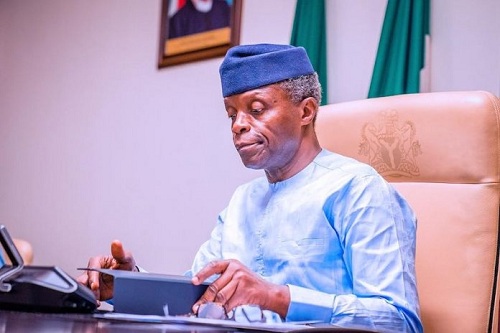This post has already been read 2045 times!
Various stakeholders have once again expressed grave concern about the current faulty and virtually unsustainable structure the country operates and only restructuring can save the state from the brink of bankruptcy. In a recent webinar organised by some stakeholders on the mitigation of the economic impact of COVID-19 and the path to recovery for the Nigerian economy, the immediate-past Emir of Kano and former Governor of the Central Bank of Nigeria, Muhammadu Sanusi, expressed serious concern that the current governance structure could lead the country to an avoidable bankruptcy.
The lamentation, which focused largely on the economic sustainability of the current Nigerian federation, presents us all an opportunity to revisit the discussion on the future direction of the country. For example, a clear indication of the unsustainability of the current governance structure in Nigeria is the recent spate of public borrowings. The key question is whether sustainability of the economy can be guaranteed if the current governance structure is maintained. Although the Federal Government, in apparent concern in this regard, set up the Economic Sustainability Committee under the headship of the Vice President, Yemi Osinbajo. The terms of reference did appear to have addressed the core issues about the country’s sustainability in the long term. Its findings, as reflected in their report indicate that lots of challenges exist in virtually every sector, which must be addressed frontally for the country to have any hope of long-term sustainability. It, however, did not envisage or suggest a change in the political governance structure of Nigeria.
Currently, the country invariably operates a unitary system of government, though on the surface, it is a federation. The framers of this structure probably did not take into account the viability of the various components or sub national governments in coming out with what is currently being operated. The country has 36 state governments and 774 local governments and majority of these are not viable and must go cap in hand to the Federal Government every month to obtain their means of sustenance. The structure is therefore too expensive and unsustainable. The question that many, including the former emir of Kano, have asked is for how long can this unsustainable structure be maintained. For example, the level of internally generated revenue by most of these sub national governments across the country is virtually paltry thus calling to the fore the need to redesign the country’s governance structure to enhance sustainability. This proposed redesign should not only be economic but has to be political also. The advent of COVID-19 has laid bare the fragility of the current structure and it is feared in many circles that many state governments would not be able to pay salaries in the foreseeable future, if the current structure persists.
The response to this challenge by the Buhari administration has been less than inspiring. For instance, instead of drastically reducing its budget size for 2020, despite the serious downturn in the oil sector, it simply resorted to unbridled excessive borrowing, which has jeopardised not only the fortunes of the future generation but also that of the present. Lots of questions arise in this regard. Why is the government finding it difficult to reduce the size of the budget? Why is the country still operating a bi-cameral legislature when it is becoming clearer by the day that the country can hardly sustain it financially? Why is the President still maintaining a large number of aircraft in the Presidential Fleet, at very high cost to the tax payer, when the streams of national income are dwindling? Indications from the global economy as evidenced by a recent World Bank report predict that the COVID-19 pandemic will cause the worst global recession since World War II, with global unemployment rising to its highest level since 1965. It also predicts that the output of emerging and developing economies is expected to contract for the first time in at least 60 years. If that is the case, what will happen to Nigeria, which is currently struggling, if this prediction comes true?
First, there’s the need for a continuation of the constitution review, which the federal legislature had begun before the advent of COVID-19. The country needs fiscal federalism now. In the First Republic, it was the federating units that exploited their resources and paid a royalty to the Federal Government. There was no federal allocation for the regions that would necessitate going to the centre to collect money based on a specific percentage. At a stage, it was 50/50 implying that the regions kept 50% and remitted 50% to be shared with 20% to the Federal Government and 30% shared among the regions.
Finally, the core issue is to evaluate the above concerns within the context of fiscal federalism. Are the governors who are used to waiting for month’s end to collect allocations from the Federation Accounts Allocation Committee meetings ready for disruptive restructuring to prevent bankruptcy? Is the ruling party ready to go the whole hog of restructuring of the convoluted structure of the federation? The President has a key role to play in all these. Is the President ready to commit ‘‘class suicide’’ in public interest? Will Buhari leave office in 2023 without a constitutional amendment that will do the right thing? He needs to do something to guarantee the sustainability of the Nigerian project. Nigeria needs to be rescued from an imminent bankruptcy, in the interest of the current and future generations.



